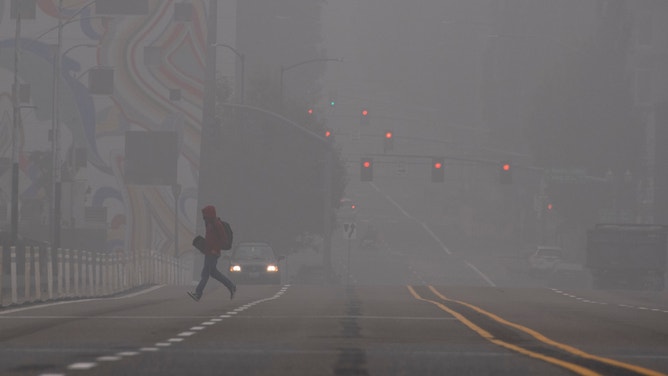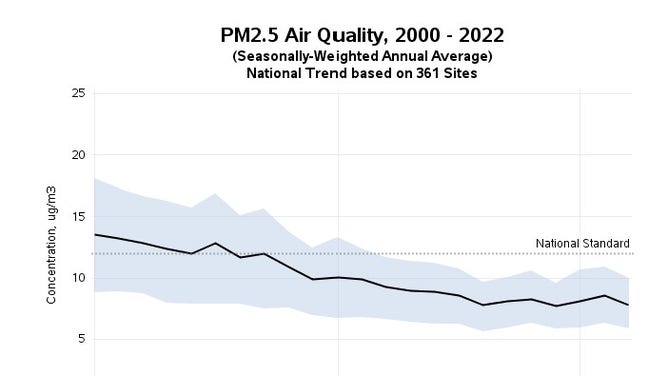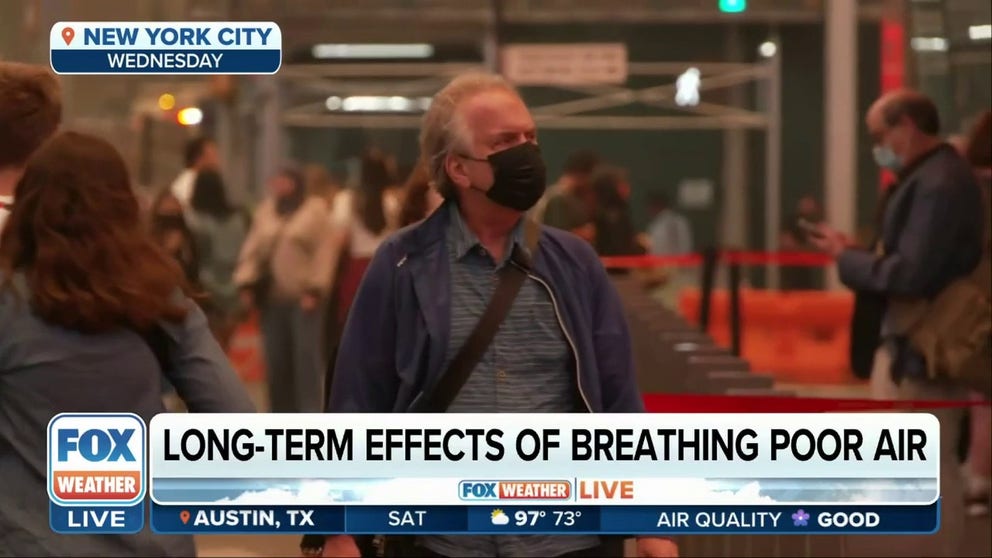EPA tightens limits on dangerous soot air pollution for first time in over a decade
This is the first time since 2012 that the Environmental Protection Agency has lowered acceptable levels of PM 2.5 pollution.
The long-term effects of breathing poor air
File: How long the symptoms of breathing wildfire smoke will last can range from a few days to a longer timeline. FOX News medical contributor Dr. Janette Neisheiwat explains. June 10, 2023.
WASHINGTON – The Environmental Protection Agency announced Wednesday it is lowering acceptable levels of soot pollution by 25% across the U.S.
This is the first tightening of limits on particles that are 2.5 micrometers in diameter (PM2.5) since 2012. Those changes took the allowable fine particulate matter concentration per year to 12 micrograms per cubic meter. The new standard is 9 micrograms per cubic meter.
It would take about 30-40 of the PM2.5 particles to equal the width of a human hair, according to Australia's Department of Climate Change.
The fine particles are dangerous because they can be inhaled into the deep parts of the lungs and transferred into blood, according to the Centers for Disease Control and Protection.
THESE 6 AIR POLLUTANTS CAN CAUSE PROBLEMS FOR YOUR HEALTH

This graphic compares a human hair to fine sand, PM 10 and PM 2.5 particles.
(Environmental Protection Agency / FOX Weather)
This move comes as a bit of a surprise. In 2020, the EPA decided to continue with the levels set in 2012 based on available science and studies. In 2021, the group announced it would reconsider the limit. The recent move is not too soon for a New York official.
"Last year, historic smoke plumes from wildfires across Canada increased New Yorkers’ awareness of how fine particulate pollution from natural and man-made sources affects the air we breathe, particularly for the most vulnerable among us," said New York State Department of Environmental Conservation Commissioner Basil Seggos in a statement.
ARE THERE LONG-TERM HEALTH EFFECTS CAUSED BY EXPOSURE TO POOR AIR QUALITY?

File: The Statue of Liberty is surrounded by smoke in New York City. June 7, 2023.
(Lokman Vural Elibol / Anadolu Agency / Getty Images)
Why are PM 2.5 dangerous?
EPA scientists estimated that the air quality limit drop from 12 to 9 will prevent up to 4,500 premature deaths, prevent 290,000 lost workdays and save the country up to $46 billion in net health benefits by 2032. Asthma symptom cases could drop by 800,000 per year, according to Earthjustice.
"For every $1 spent from the action, there could be as much as $77 in human health benefits in 2032," the EPA's announcement stated.
The agency will also alter the air pollution monitoring network, thus developing a factor indicating the proximity of populations at increased risk for fine particle pollution health consequences.
WHERE DO OUR TOP AIR POLLUTANTS COME FROM?

File: On September 14, 2020, air quality plummeted in Portland, Oregon due to wildfires and was among the worst in the world.
(OBYN BECK/AFP via Getty Images / Getty Images)
"Particle pollution is of great concern to those with heart or lung disease and other vulnerable communities, including children, older adults, and people with health conditions like asthma, as well as already overburdened communities, including many communities of color and low-income communities throughout the United States," the EPA said about lower-income neighborhoods near power plants. "Strengthening the Clean Air Act standard for fine particle pollution improves air quality nationally for everyone, ensuring that communities that are overburdened by pollution are not left behind."
The "likely earliest year" that states would be required to meet the new standard is 2032, said the EPA. Considering states' efforts up to this point, the agency feels 99% of all counties can meet the new limit in a little less than a decade.
WHAT IS AN AIR QUALITY ACTION DAY?
Of the 52 counties not projected to pass the new limit, 23 are in California.
How to cut fine particle pollution
The U.S. has already done a good job of cutting fine particle pollution. The agency stated that since 2000, concentrations in outdoor air have already decreased by 42%. At the same time, the country's Gross Domestic Product increased 52%.

The concentration of fine particulate matter over a year has decreased 42% since the turn of the century.
(EPA / FOX Weather)
"Some PM is emitted directly from combustion sources, construction sites, industrial processes, and older diesel engines, while other particles are formed in the atmosphere in complex chemical reactions with other pollutants such as sulfur dioxide and nitrogen oxides that are emitted from power plants, gasoline and diesel engines, and certain industrial processes," stated the EPA. "Particle pollution from industrial processes and other sources is controllable, with readily available and cost-effective technologies to manage emissions, and EPA will build on decades of experience in providing flexible options to states and Tribes across the implementation process."
The EPA did not touch the current regulations for the 24-hour fine particulate matter concentration, the PM10 annual concentration or the PM10 24-hour concentration.
The EPA's new standard is still above the current World Health Organization standard for PM2.5, which is 5 micrograms per cubic meter.


